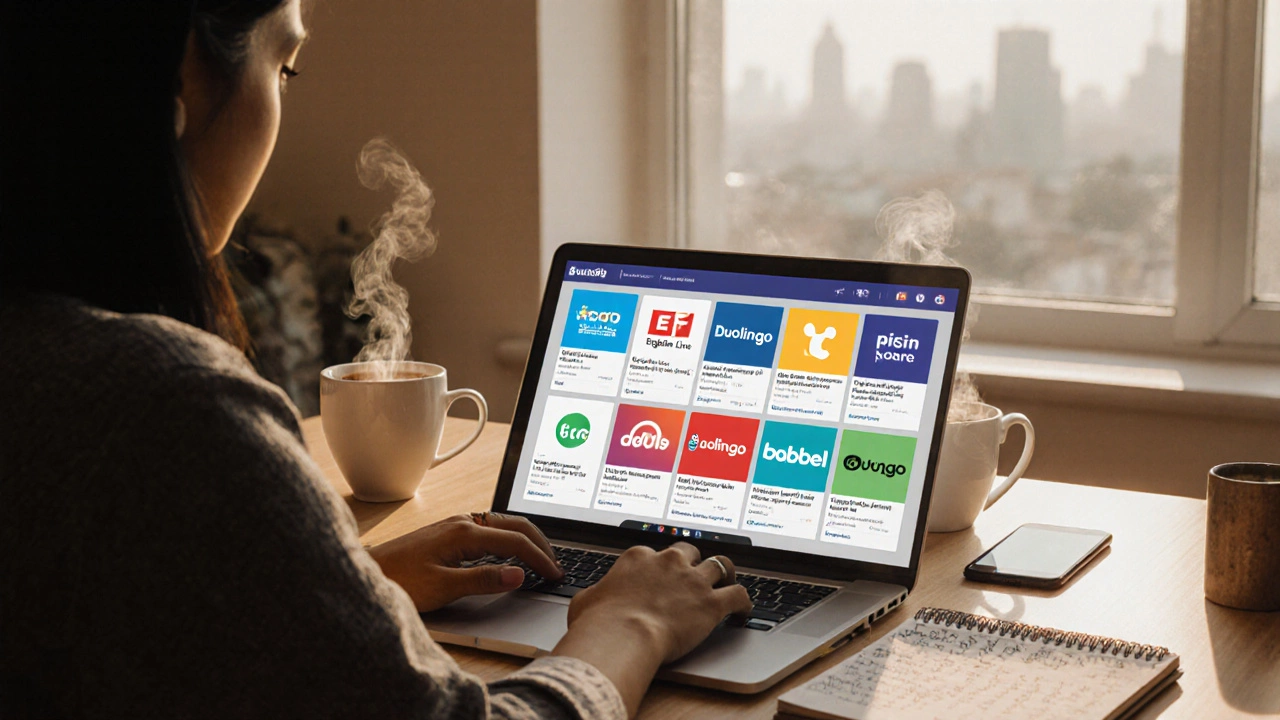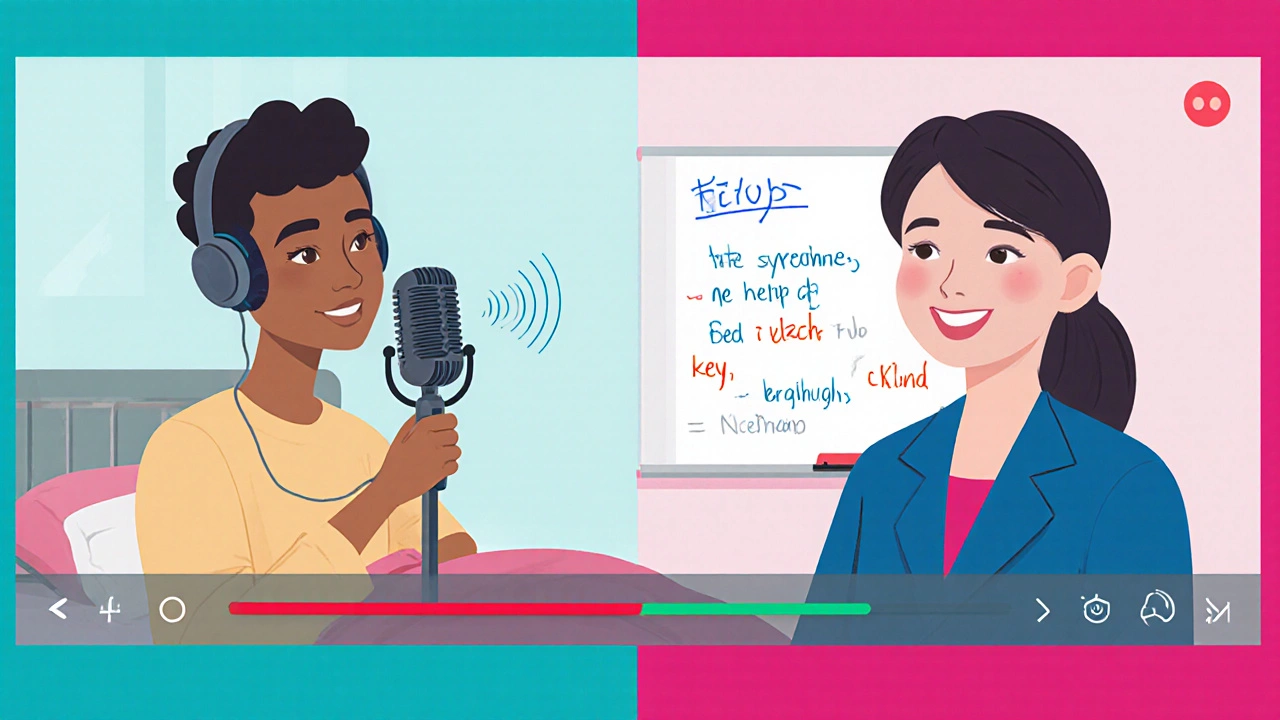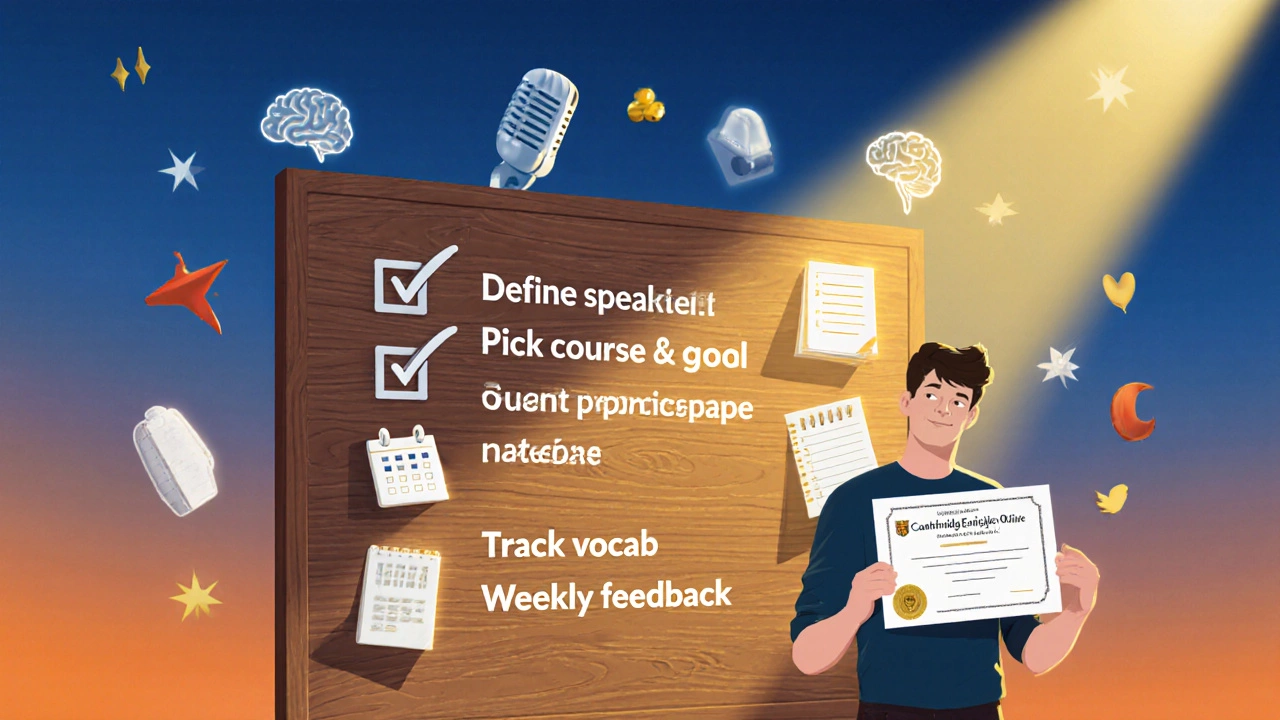
English Course Recommendation Calculator
Find Your Perfect English Course
Answer a few questions to get personalized recommendations based on your goals and schedule
English speaking courses are structured learning programs that focus on improving pronunciation, conversation flow, and confidence when using English in real‑world situations. Whether you’re a beginner craving basic dialogues or a professional needing polished presentation skills, the right course can shave months off your learning curve.
Quick Takeaways
- Pick a course that matches your level and daily schedule.
- Interactive speaking practice beats passive listening.
- Free trials let you test teaching style before you commit.
- Look for built‑in feedback tools like AI pronunciation checks.
- Combine a paid core program with free supplemental resources for balanced growth.
How to Choose the Right English Course
First, figure out what you need:
- Goal clarity: Are you studying for travel, work, or an exam?
- Time commitment: Do you have 15 minutes a day or a few hours on weekends?
- Learning style: Do you thrive on video lessons, live tutors, or gamified drills?
Once you have answers, filter courses by these criteria:
- Level alignment: Beginner, intermediate, or advanced tracks.
- Speaking focus: Live conversation sessions, AI‑based pronunciation feedback, or peer‑to‑peer practice.
- Pricing model: Subscription, one‑off payment, or free with ads.
- Certification: Whether you need a recognized credential for work or study.
Top 10 best English courses for 2025
Below is a snapshot of the most popular programs based on user ratings, curriculum depth, and speaking‑centred features. Each entry includes a brief description, price range, and a standout feature.
| Course | Platform | Price (per month) | Level | Key Feature |
|---|---|---|---|---|
| EF English Live | EF Education First | $59 | All | 24/7 live teacher chat |
| Duolingo English | Duolingo | Free / $12.99 Premium | Beginner‑Intermediate | Gamified bite‑size lessons |
| Babbel English | Babbel | $13.95 | Beginner‑Intermediate | Real‑life dialogues & speech recognition |
| Rosetta Stone English | Rosetta Stone | $35 | All | Immersive, no‑translation approach |
| Coursera English Specialization | Coursera | $49 (subscription) | Intermediate‑Advanced | University‑led modules & peer review |
| edX English for Speakers of Other Languages (ESOL) | edX | Free / $99 for certificate | Intermediate‑Advanced | Academic‑focused, flexible pacing |
| BBC Learning English | BBC | Free | All | News‑based audio & video clips |
| Cambridge English Online | Cambridge Assessment | $30 | All | Official exam prep & AI feedback |
| IELTS Preparation Course | Various providers (e.g., Magoosh) | $79 | Advanced | Targeted test‑taking strategies |
| Local Community College ESL | In‑person / Online | $250 (per semester) | Beginner‑Advanced | Accredited credential, small classes |
Deep‑Dive: What Makes These Courses Stand Out?
Here’s why the list above earned a spot:
- EF English Live offers round‑the‑clock live teacher access, letting you practice speaking whenever a free moment appears.
- Duolingo English turns daily practice into a game, so you stay motivated without feeling pressured.
- Babbel English focuses on phrases you’ll actually use at work or travel, and its speech‑recognition module corrects you on the spot.
- Rosetta Stone English removes the safety net of translation, forcing you to think in English from the first lesson.
- University‑level courses on Coursera and edX provide structured curricula, peer feedback, and sometimes a certificate recognized by employers.
- BBC Learning English gives you up‑to‑date news clips, which double as listening practice and cultural insight.
- Cambridge English Online leverages AI to point out pronunciation errors you might miss on your own.
- For exam‑focused learners, an IELTS Preparation Course offers targeted practice, mock tests, and tips that even native speakers miss.

Free vs. Paid: What’s Worth Your Money?
Free resources are fantastic for building a habit, but they often lack personalized feedback. Paid programs usually include:
- Live tutoring or AI‑driven pronunciation checks.
- Structured progression paths that keep you from plateauing.
- Certificates that add weight to a résumé.
If you’re serious about speaking fluently within months, a modest subscription (under $20 per month) is a solid investment. Combine it with free podcasts or news sites to keep variety high.
Course Formats & Features to Look For
Not all courses deliver the same experience. Here are common formats and why they matter:
- Live video lessons - Real‑time interaction with a teacher replicates classroom dynamics.
- AI‑powered speaking labs - Tools like speech‑to‑text analysis give instant correction.
- Community forums - Peer practice keeps you accountable and introduces diverse accents.
- Progress tracking dashboards - Visual metrics let you see streaks, mastery levels, and gaps.
- Downloadable resources - Offline PDFs or audio let you study without internet.
Common Pitfalls and How to Avoid Them
Even the best course won’t work if you fall into these traps:
- Skipping speaking practice. Listening is easy; speaking builds confidence. Schedule at least one spoken activity per day.
- Relying on subtitles. Turn them off after the first pass and repeat the audio to force comprehension.
- Choosing a course that’s too easy. If you finish a module in a day, look for a higher level.
- Ignoring feedback. Record yourself, compare to native models, and adjust.
- Inconsistent study habits. Short daily sessions beat an occasional marathon.

Checklist: Set Yourself Up for Success
- Define a clear speaking goal (e.g., hold a 10‑minute conversation).
- Pick a course that matches your level and schedule.
- Reserve a quiet space for daily speaking practice.
- Use a notebook or app to track new vocab and pronunciation notes.
- Schedule weekly feedback sessions - with a tutor, AI tool, or language exchange partner.
Next Steps: Put the Plan into Action
1. Sign up for a free trial of the top two courses that fit your budget.
2. Complete the first three lessons, noting which format (video, AI lab, forum) feels most engaging.
3. Set a 30‑day speaking challenge: record a 1‑minute monologue each day and compare progress.
4. After the trial, decide which course gives you the most speaking time and feedback quality.
5. Commit to the chosen program, integrate free resources for extra exposure, and revisit this checklist every month to tweak your approach.
Frequently Asked Questions
Do I need a computer for these courses?
A laptop or tablet works for most platforms. Some apps, like Duolingo, also have fully functional mobile versions, so you can practice on the go.
How quickly can I become fluent?
Fluency depends on your starting level and practice intensity. With 30 minutes of focused speaking practice daily, many learners reach conversational confidence in 3‑4 months.
Are certificates from these courses recognized by employers?
Certificates from accredited providers like EF, Cambridge, and Coursera carry weight, especially when paired with demonstrable speaking ability.
Can I combine multiple courses?
Yes. Many learners use a paid core course for structure and supplement it with free podcasts, news sites, or language‑exchange apps for extra exposure.
What if I miss a lesson?
Most platforms let you catch up later. Choose courses with on‑demand video libraries so a missed session isn’t a setback.





